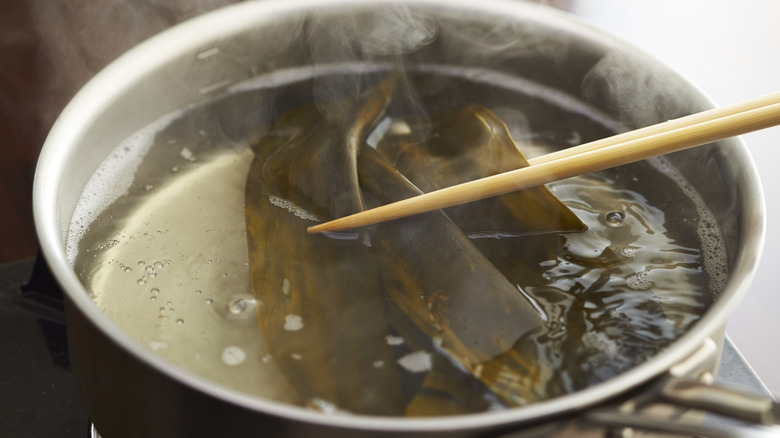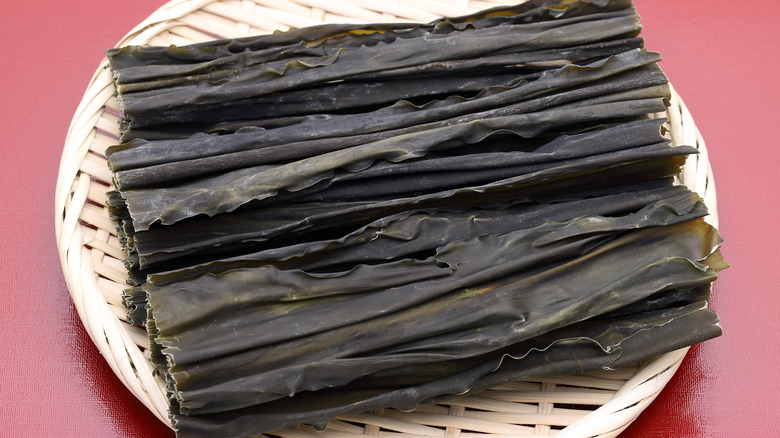How Martha Stewart Preps Foraged Seaweed For Her Pantry
As a source of vitamins and umami-packed flavor, seaweed has really been having a moment. No longer just used for California rolls, various types of edible seaweed can be found in snack packs, green juices, and even cocktails, bringing a distinctive oceanic brininess to any dish or drink.
Another great thing about seaweed is that it is a sustainable substitute for traditional greens, since it grows wild and doesn't require chemical fertilizers or dedicated agricultural land to cultivate. This also means that it can be foraged, making it accessible and affordable depending on where you live.
Even culinary mogul Martha Stewart engages in seaweed foraging at her Maine residence, known as Skylands. Located on the scenic shoreline of Mount Desert Island, this picturesque setting offers an abundance of nutrient-rich seaweed waiting to be harvested. According to Food & Wine, Stewart dries her foraged seaweed and uses it to make the flavorful and underappreciated condiment of seaweed salt.
What is kombu?
An algae that flourishes in saltwater, seaweed is renowned as a superfood due to its abundant nutritional content. It boasts a generous supply of vital vitamins such as A, B12, C, and E. Various types of seaweed are prominent in Japanese cuisine, including nori, the flexible and dried seaweed used for sushi rolls, and wakame, the smooth and chewy seaweed commonly found in miso soup.
But the kind that Martha Stewart uses is kombu, which holds a very special place in Japanese cooking. Kombu is usually dried into thick, brittle sheets, and pieces can be broken off and soaked or simmered in water to make dashi, a flavorful broth used as a base in most Japanese soups. Dashi usually also contains bonito flakes made from dried fish, but can be made vegan by leaving these out. Kombu, on the other hand, serves various purposes, such as enhancing the digestibility of beans. When gently simmered with beans (avoid boiling to prevent bitterness), the amino acids present in kombu help break down some of the sugars found in legumes.
How to forage kombu
While kombu is most often found in the ocean habitat surrounding Japan, or along the coast of California near Sonoma or Mendocino, there are many coastal ecosystems where kombu can be foraged. In order to harvest kombu, which lives close to the ocean's surface, you can either collect pieces that have detached and floated to the surface, or twist the kombu off at the root of the plant. Then it must be cleaned to remove any sand or dirt. Kombu can be dried in a dehydrator for 8 hours at 95°F, or in an oven for 3 hours at 260°F. However, kombu is traditionally air dried in the sun, which according to Martha Stewart, can take up to a year.
Once the kombu has dried, Stewart grinds it with salt to make seaweed salt, which can be sprinkled on anything from popcorn to the rim of a cocktail glass. It will keep for years if stored correctly, and is sure to add a savory element you won't be able to resist.



